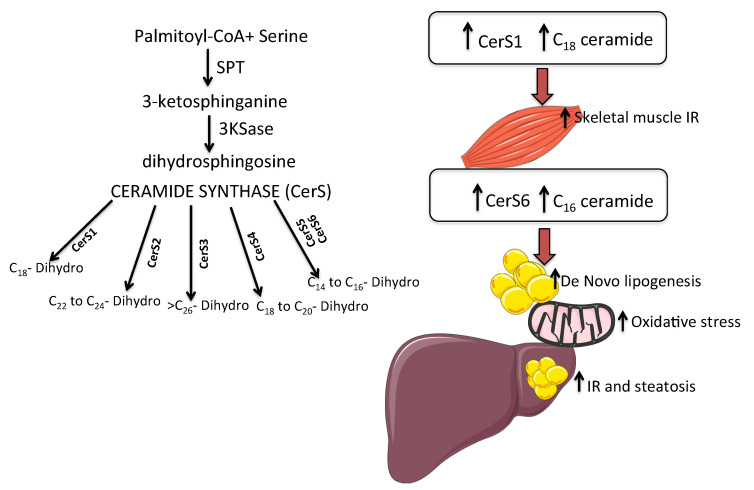Figure 1.
Ceramide synthases (CerSs) and the different isoforms (Cers1–6) are responsible for acylation reactions that produce different species of ceramides. In particular, CerS6 produces C16 ceramide that leads to insulin resistance (IR), de-novo lipogenesis and mitochondrial dysfunction. CerS1 mediated C18 ceramide that is related to skeletal muscle insulin resistance.

